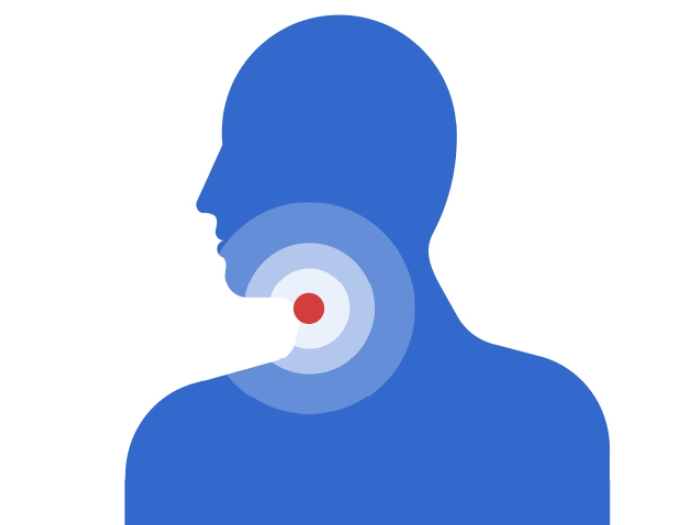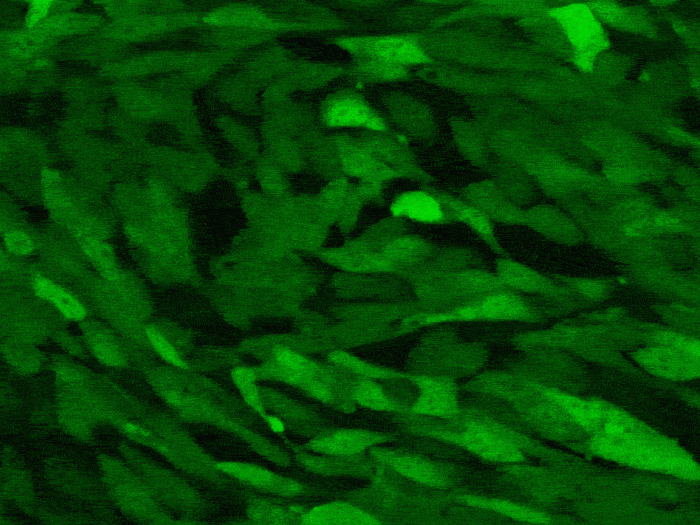This phase 2 trial also identified a subset of patients with specific mutations who may see the most benefit from the drug.
11:01 AM
Author |

When first- and second-line treatments have been exhausted, few options remain for patients with advanced head and neck cancer.
A new phase 2 clinical trial by researchers at the University of Michigan Rogel Cancer Center found the drug axitinib was able to extend the lives of these patients by several months, and also identified a subset of patients with a specific mutation for whom the drug is likely to work best.
Survival increased from less than 6 months with the current standard treatments to nearly 10 months in the 28 patients enrolled in the trial, the research team reported in the journal Cancer. Additionally, 75% of patients with alterations in the PI3K signaling pathway, which is involved in cell cycle regulation, had a good response to the therapy, versus 17% of those without the alterations.
"These are patients with metastatic cancer for whom there are no good options outside of clinical trials," says study first author Paul Swiecicki, M.D., an oncologist at Michigan Medicine, U-M's academic medical center. "And it's a very timely study because tyrosine kinase inhibitors like axitinib, which target tumors' blood supply, have shown considerable synergy when combined with immunotherapy."
MORE FROM THE LAB: Subscribe to our weekly newsletter
One of the stumbling blocks for this type of combination therapy has been the significant side effects that occur when the two approaches are used at the same time, he says. The current study, however, showed that axitinib may actually prime the body in a way that makes subsequent immunotherapy more effective.
"Although the number of patients was small, our study was able to look at what happened to those who received immunotherapy after axitinib and found these patients' cancers responded extremely well — similar to what we've seen from other studies where people received the treatments simultaneously," Swiecicki says. "This supports the idea that we may be able to combine the two approaches in a new way by giving them sequentially rather than at the same time, which should cut down on the severity of the side effects."
Axitinib is currently approved for the treatment of renal cell carcinoma.
"Based on the mechanism of action of the drug, and what we know about how head and neck cancer grows, we were optimistic it could make a difference for head and neck cancer patients," Swiecicki says.
The study is innovative in another way: it applies new criteria for measuring the effectiveness of axitinib.
These are patients with metastatic cancer for whom there are no good options outside of clinical trials.Paul Swiecicki, M.D.
In many studies, what doctors are looking for is evidence on imaging scans that the treatment is shrinking or dissolving the tumors — like putting salt on an ice cube, Swiecicki says.
"However, because tyrosine kinase inhibitors work by cutting off the blood supply to a tumor, they can actually swell as they start to die in the center and material accumulates there; only afterward do they shrink," he says. "But, based on our traditional criteria for evaluating radiographic images, when a tumor gets larger that can be read as progression of the disease."
A previous study by the group, which used different evaluation criteria, found patients had a limited response to the drug in imaging scans, despite the doctors knowing their patients seemed to be doing better after receiving it.
"Michigan has been a leader in adopting different radiological criteria to characterize the response to different types of treatment across cancers — for immunotherapy, radiation therapy or targeted therapy," Swiecicki adds.
The research was supported in part by the National Comprehensive Cancer Network Oncology Research Program from general research support provided by Pfizer.
U-M has filed for patent protection on a companion diagnostic related to the data presented in the study.
Additional authors include Emily Bellile, Collin Brummel, J. Chad Brenner and Francis Worden, all of U-M.
Paper citied: "Efficacy of axitinib in metastatic head and neck cancer using novel radiographic response criteria," Cancer. DOI: 10.1002/cncr.33226

Explore a variety of healthcare news & stories by visiting the Health Lab home page for more articles.

Department of Communication at Michigan Medicine
Want top health & research news weekly? Sign up for Health Lab’s newsletters today!





